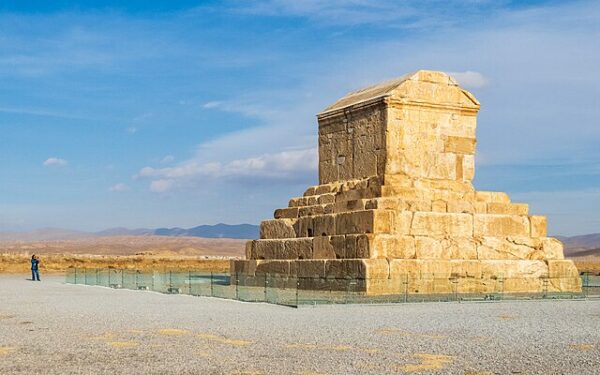On October 12, 539 BC, one of the most dramatic and consequential events in ancient history unfolded: the fall of Babylon to the army of Cyrus the Great, king of Persia. The conquest did not merely mark the end of the Neo-Babylonian Empire—it signaled the birth of a new imperial order, the Achaemenid Persian Empire, whose policy of tolerance and administrative genius would influence governance for centuries to come. The event was so quietly executed and yet so monumental in consequence that ancient chroniclers and later historians alike saw in it the divine hand of destiny, transferring world power from Mesopotamia to Persia.
The story of Babylon’s fall begins with Cyrus II, founder of the Achaemenid dynasty, whose rise from a small Persian kingdom to a vast dominion over Media, Lydia, and ultimately Babylon itself remains one of antiquity’s most remarkable campaigns. By 540 BC, Cyrus had defeated Croesus of Lydia, consolidating his western frontier. His attention then turned toward the fertile lands of Mesopotamia, ruled by Nabonidus, the last Babylonian king. Nabonidus, an enigmatic figure who spent years away from the capital worshiping the moon god Sin in the Arabian oasis of Tayma, had alienated both the Babylonian priesthood and his subjects by neglecting Marduk, Babylon’s chief deity. His absence and religious eccentricities created a climate ripe for discontent—and Cyrus, ever the master strategist, knew it.
According to the Nabonidus Chronicle—one of the most valuable contemporary sources—Cyrus’s general, Gobryas (or Ugbaru), led the Persian forces into battle near Opis on the Tigris River in September 539 BC. The engagement ended in a crushing Babylonian defeat, followed by widespread rebellion within the empire. Cyrus’s forces then advanced southward toward the capital itself, encountering minimal resistance. The city of Sippar surrendered without a fight, and by October 12, the seemingly impregnable walls of Babylon were breached through guile rather than siege.
Classical sources, including Herodotus and Xenophon, later embellished the story with dramatic detail. They claimed the Persians diverted the Euphrates River, lowering its waters enough for soldiers to enter the city under the gates along the riverbed. The Babylonians, complacent and perhaps celebrating a festival, were caught entirely unprepared. “Thus was Babylon taken,” wrote Xenophon, “while its inhabitants danced.” Though the precise truth of the river diversion remains debated by modern scholars, archaeological and cuneiform evidence supports the notion that the conquest was swift and largely bloodless.
Cyrus entered Babylon soon afterward to the acclamation of its people. In an act of statesmanship unprecedented for the age, he declared himself chosen by Marduk to restore peace and proper worship. This message was immortalized in the Cyrus Cylinder, a clay inscription discovered in the 19th century and often regarded as an early charter of human rights. On it, Cyrus proclaims: “I returned to their homes the gods who had been brought to Babylon. I gathered all their inhabitants and returned to them their dwellings.” By restoring local temples and repatriating displaced peoples—including, most famously, the Jews exiled by Nebuchadnezzar—Cyrus established himself not as a conqueror but as a liberator.
This benevolent image was more than political theater; it reflected Cyrus’s governing philosophy. The Persian Empire he forged out of Babylon’s ashes would be a mosaic of cultures and religions bound by pragmatic tolerance and an efficient administrative system. Local satraps (governors) managed their regions under the overarching authority of the Great King, while subject peoples retained their languages, customs, and gods. In contrast to the autocratic centralism of the Assyrians and Babylonians, Cyrus’s model of empire endured precisely because it balanced power with autonomy.
The fall of Babylon thus represents more than a military victory—it marks a civilizational shift. The ancient Mesopotamian world, dominated for millennia by city-states and regional monarchs, gave way to the first true transcontinental empire. Persia’s borders would eventually stretch from the Indus Valley to the Aegean Sea, uniting East and West under a single political system. For centuries afterward, rulers from Alexander the Great to the Roman emperors would invoke Cyrus’s legacy as the archetype of the just and magnanimous sovereign.
When Cyrus died around 530 BC, likely in battle on his empire’s northeastern frontier, he was buried in a simple stone tomb at Pasargadae—a modest resting place for a man whose vision reshaped the known world. The night of October 12, 539 BC, when Babylon’s mighty gates opened without a cry of resistance, stands as one of those rare moments in history when the course of civilization turned quietly, almost invisibly, yet irreversibly. The Babylonian Empire had fallen, but in its place rose something greater: a vision of empire tempered by mercy and law, the enduring legacy of Cyrus the Great.






